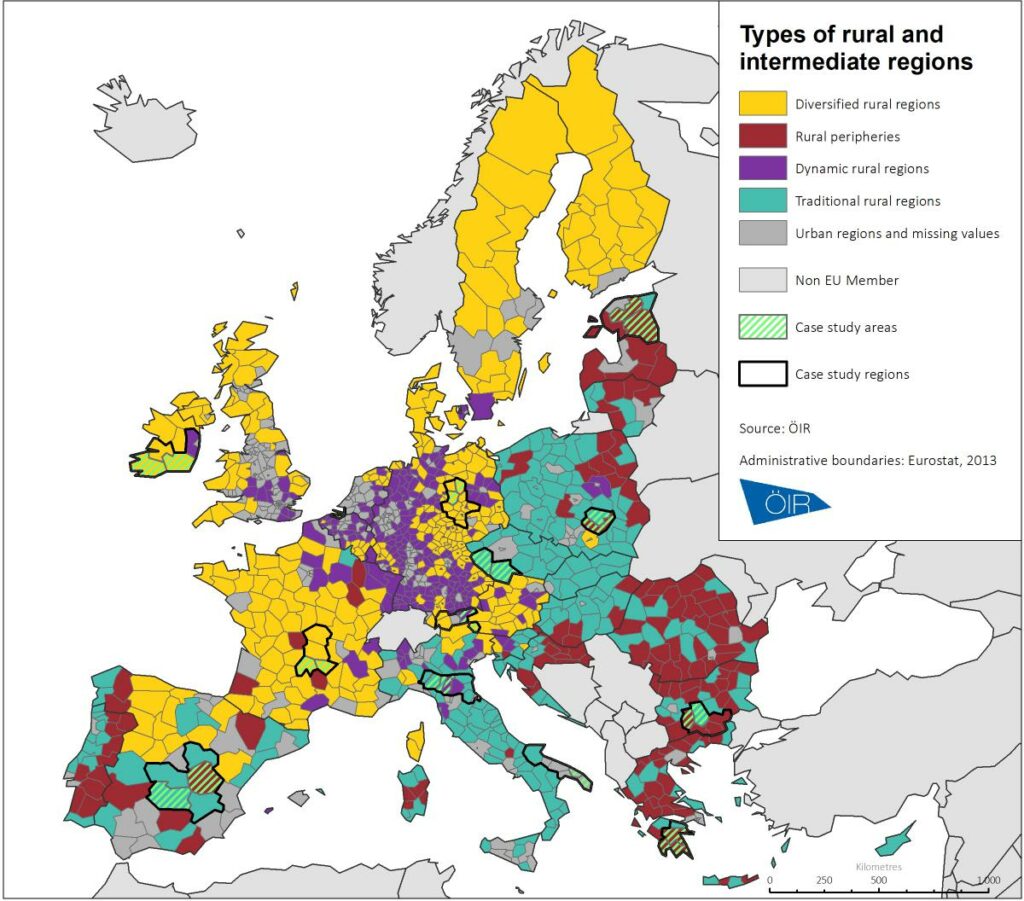ÖIR carried out an evaluation on the impact of the Common Agricultural Policy on territorial development of rural areas, with a focus on socio-economic aspects. Effects on rural regions in the EU-28 are examined during the programming period 2014-2020. The study provides an evaluation of the mechanisms and pathways through which the CAP is successfully supporting balanced territorial development, and provides recommendations for improvements in the following upcoming policy cycle.
The effects of CAP instruments and measures on socioeconomic aspects and social inclusion are examined through quantitative methods such as input-output analysis, clustering, and statistical regressions, as well as qualitative methods, including case studies in 12 countries, literature review and the observation of development trends over the programming period.

According to the evaluation study findings, the issues and needs faced by rural regions in the EU-28 are significant. The evaluation’s quantitative and case study findings indicate that the impact of the CAP in supporting balance territorial development through the improvement of socio-economic aspects and social inclusion varies according to the characteristics of the rural region and the policy mix applied. Pillar I instruments, in particular direct payments, have been found to positively impact regional employment and re-investment. Pillar II measures, some of which are specifically designed to address socio-economic issues, demonstrate also positive effects.





